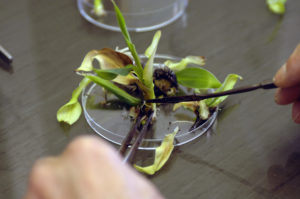 Not to be confused with or compared to genetic modification, plant breeding is an agricultural technology used for decades that might offer an abundance of affordable, tasty and nutritious foods for the growing world population, according to the March 19th issue of The Food Journal.
Not to be confused with or compared to genetic modification, plant breeding is an agricultural technology used for decades that might offer an abundance of affordable, tasty and nutritious foods for the growing world population, according to the March 19th issue of The Food Journal.
In this issue, editors will examine the science behind plant breeding, its history and how it can affect the food chain from farmer to consumer.
Without modifying a gene, plant breeding consists of two seeds put together, varying the genetics of a plant in order to produce desired characteristics.
For example, the tangelo is an accidental hybrid of a mandarin orange and a grapefruit or pummel. In addition, seedless watermelons and “super veggies” such as the Vital sight carrot that boasts 25 percent more Provitamin A than regular carrots also are results of plant breeding.
“Plant breeding is not a new phenomenon,” says Phil Lempert, editor of The Food Journal.
“In fact, the crops that gave rise to modern corn and wheat have undergone a massive change and few would recognize the ancestral crops. New super breeds of vegetables and fruits with greater nutrients and a stronger resistance to seasonality are benefits of plant breeding.”
According to experts, when the technology is the seed, it can move to small or large farms anywhere in the world. However, education and training programs are key to ensure the next generation of capable plant breeders and to help the US remain agriculturally competitive especially in the wake of aging farmers.

You must be logged in to post a comment Login